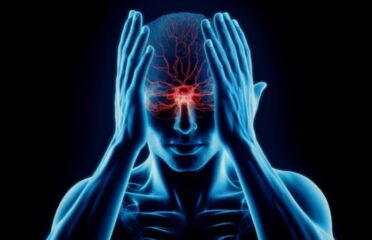Holmes Adie syndrome
Overview

Holmes-Adie syndrome is a rare neurological disorder of unknown etiology comprising unilateral tonically dilated pupils, along with light affecting the pupil of the eye that constricts slowly in bright light, called the tonic pupil.
This activity outlines the evaluation and management of Adie syndrome and highlights the role of the interprofessional team in treating patients with the condition.
In most patients, the pupil is larger than normal and is slow to react in response to direct light. Absent or poor tendon reflexes are also associated with this disorder.
Symptoms
• A change in the dilation of one of the pupils is the most noticeable symptom.
• The pupils normally get smaller or larger in response to changes in light. This happens very quickly to help us see in different light conditions. If a person has Adie syndrome, the affected pupil does not do this correctly.
• The pupil might stay dilated i.e. - open wider than necessary in the presence of light.
• Even when doctors shine a bright light near the eye to test for a reaction, the eye may be less responsive, but the affected eye may not necessarily cause symptoms.
• Some individuals might experience impaired vision. The vision may be blurry or the individual may have trouble with depth perception.
• Some other symptoms like light sensitivity or the presence of “light glares” may occur at times.
Causes & Risks
The direct cause is idiopathic but may involve an infection.
What can be the cause of Holmes-Adie syndrome?
• There could be damage to nerve cells in the ciliary ganglion, an area of the brain that controls eye movement, and the dorsal root ganglion, an area of the spinal cord that is involved in the autonomic nervous system.
• There may be inflammation of the ciliary ganglion, a cluster of nerve cells found in the eye socket, behind the eyes, or damage to the post-ganglionic nerves.
• The ciliary ganglion supplies nerves to the eye. These nerves carry signals that help to control the pupil’s response to stimuli such as growing smaller or larger in response to light, dark, or other stimuli.
• In Adie syndrome, the nerve cells are damaged, because there are so many nerve cells serving accommodation usually a sufficient amount survives.
• The damaged nerves may regenerate, but some do so improperly.
• The loss of the tendon reflexes is believed to be caused by damage to the dorsal root ganglions.
Test & Diagnosis
• A diagnosis of Adie syndrome can be made by a thorough clinical evaluation and a detailed patient medical history. The ophthalmologist will conduct a complete eye examination. An eye doctor may use diluted pilocarpine to test the pupil.
• An ophthalmologist can help diagnose the symptoms of Adie syndrome. However, correctly diagnosing rare diseases, such as Adie syndrome, can take time.
• A diagnosis of Adie syndrome generally involves evaluating the person’s medical history and genetics. Doctors will use a physical exam to look for the typical symptoms of Adie syndrome, such as slow reflex responses or symptoms in the eye.
• In some cases, doctors may recommend genetic testing to look for known associated causes.
Treatment
• The type of treatment is likely to depend on the symptoms that a person with Adie syndrome is having.
• Doctors may recommend eye drops containing medication that can help constrict a pupil that has become overly dilated. This constriction may help with symptom such as light glare.
• Some individuals might have to use prescription glasses or get a change in their prescription to help adjust their vision and compensate for any vision loss.
• People with profuse sweating will need a procedure called a thoracic sympathectomy to fix the issue if they do not respond to medication. Symptoms, slow reflexes, may be permanent.
Living With
Holmes-Adie syndrome, a rare neurocondition that affects the eyes and nerves, can bring about various challenges.
Let’s see what it can demand –
The hallmark of Holmes-Adie syndrome is a condition called Adie's pupil, which involves the pupils being larger than normal and reacting slowly to light. This may affect vision and sensitivity to light.
Holmes-Adie syndrome often affects one eye initially, leading to asymmetrical pupil size, unilateral symptoms, and function between the two eyes.
Some people might experience blurred vision, difficulty focusing, or problems with near vision.
Reduced or Absent Reflexes: Apart from pupil abnormalities, people with Holmes-Adie syndrome might have decreased or absent deep tendon reflexes, especially in the legs.
There may be additional symptoms like reduced sweating, dry mouth, or mild neurological symptoms like mild gait instability.
Complications
• There could be a few complications arising from Adie syndrome -
Study shows that 80% of trusted source cases are unilateral, which means that they only affect one eye. Therefore, only about 20%Trusted Source of cases involve both eyes to some degree.
• The involvement may also progress i.e. -start in one eye and slowly begin to affect the other eye, too
• There could be excessive sweating.
• The eyesight of a person with Adie syndrome may change, and many people will have to wear corrective lenses to compensate for vision changes.
• Holmes-Adie syndrome can cause loss of deep tendon reflexes. and it can become permanent.





